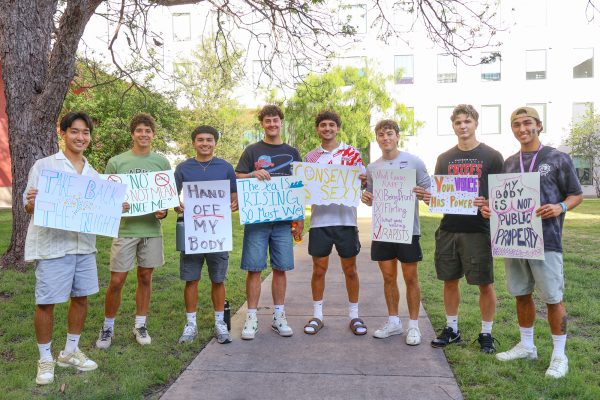‘Logan’ serves as bittersweet swan song for Hugh Jackman
What factors make an ending great? Is it one that makes you laugh, cry or cheer in joy? Or does it make you do all of the above? Does it satisfy the viewer, or does it keep you up at night, thinking about those final scenes? Whatever the answer, “Logan” provides an excellent ending to the story of James “Logan” Howlett (Hugh Jackman).
“Logan,” directed by James Margold, is the most recent installment of the X-Men cinematic franchise, being the 10th film overall in the interconnected universe. The movie follows the story of Logan trying to save money from chauffeur and Uber driving jobs, in order to buy a boat to escape from the dystopian world he’s living in. The year is 2029, and due to the actions of the villainous Transigen Project, the mutant population has been decimated.
The film tracks how after meeting a young new mutant, Laura (Dafne Keen) Logan is thrusted back into the world of heroics and adventure, trying to get the young girl, revealed to be Logan’s cloned daughter, to North Dakota. Joining the two clawed mutants are Professor Xavier (Patrick Stewart), the former leader of the X-Men and Caliban (Stephen Merchant), a mutant with tracking abilities.
“Logan” is not only a superhero film, but a neo-noir western, a road trip movie and an intense character study. Being the second mainstream superhero film to receive a hard R rating, it uses that in order to tell a hauntingly heartbreaking story about a man who wants nothing more than to die. This is not the Logan viewers are used to seeing, instead a man who is in constant pain, and trying to just get through the day, in order to do right by Professor X, his last link to a better life.
From thrilling and brutal action sequences to beautifully shot landscapes scenes “Logan” delivers a compelling story unseen in any comic book film before it. The way Margold uses the R rating to convey the ruthless and animalistic fighting style of Logan, is something that previous films lacked. There is a physicality that permeates every scene with Logan, from the way he limps, to the scars that paint across the tapestry of his worn down body.
Another main difference of this film and others is the fact that Logan’s healing factor, the thing that allows him to recover from almost any wound, has slowed down in his older age. Not only is he is constant and chronic pain, forcing him to drink to numb it, but it takes longer for him to heal from fights. This causes him to seriously consider ending his life on his own terms, with a specially crafted bullet that has the ability to kill him.
The film willing gives the audience the berserker violence that is usually associated with Logan in the comics. From the opening fight scenes, the director wants to make it clear that this is a hard R movie. Claws tear through flesh like butter, killing enemies in the most vicious and violent ways. A common technique used by both Logan and Laura is to impale their claws through the skulls of various villainous characters.
Even with all of this violence and action, the film never forgets that Logan is its protagonist, and every scene does something to inform the audience of his state of mind. The audience sees just how haunted Logan is, and how a life of pain and misery has managed to break him. The only silver lining is the hope to escape to the ocean, and to live the rest of his days in peace with Professor X.
However, even that dream is taken from him, and it causes Logan to finally snap. It leads him down a path to his death, on his own terms. Logan keeps his promise to get Laura to safety, and is able to die fulfilled, having done one last good deed.
“Logan” serves as a brutal and heart breaking swan song for Hugh Jackman’s portrayal of the clawed mutant. The film manages to blend action with genuine human moments, creating the best send off possible for the character, while still retaining the slightest hope of the future with Laura.






